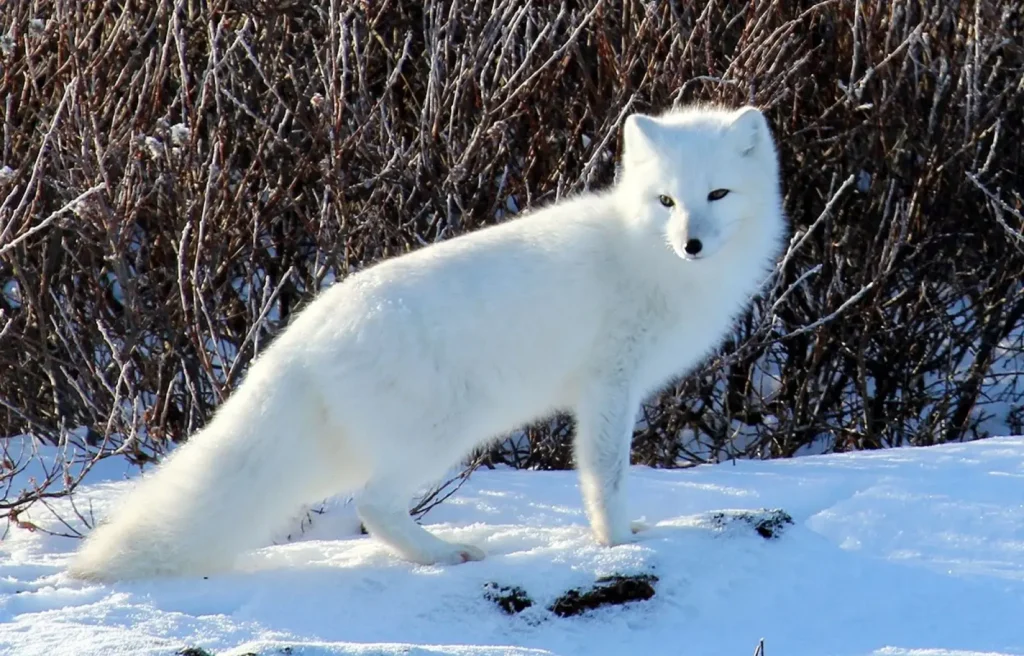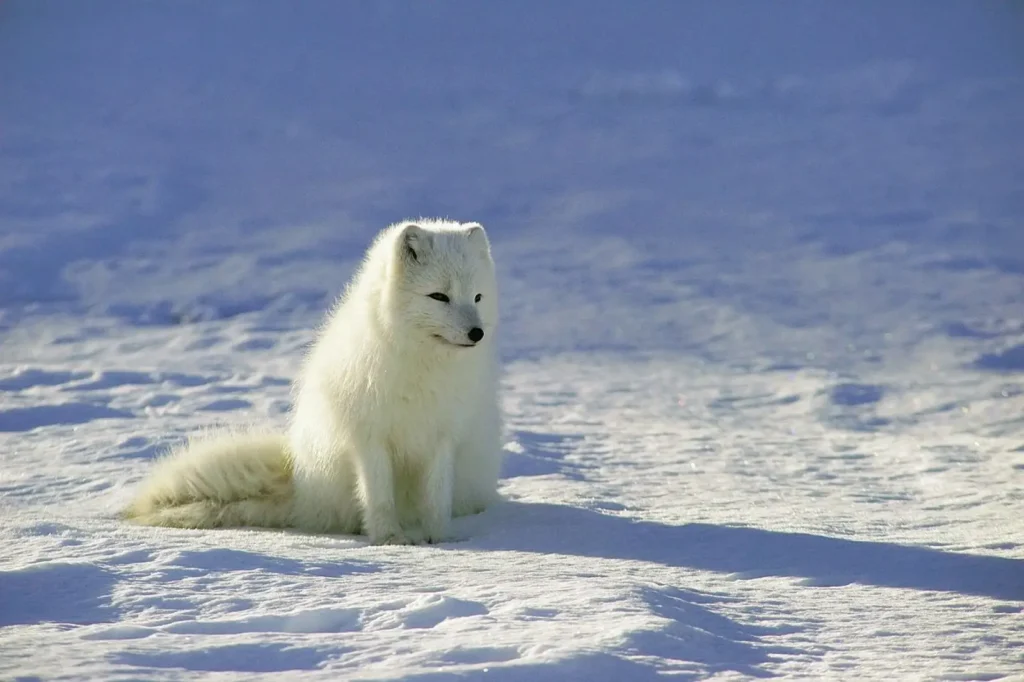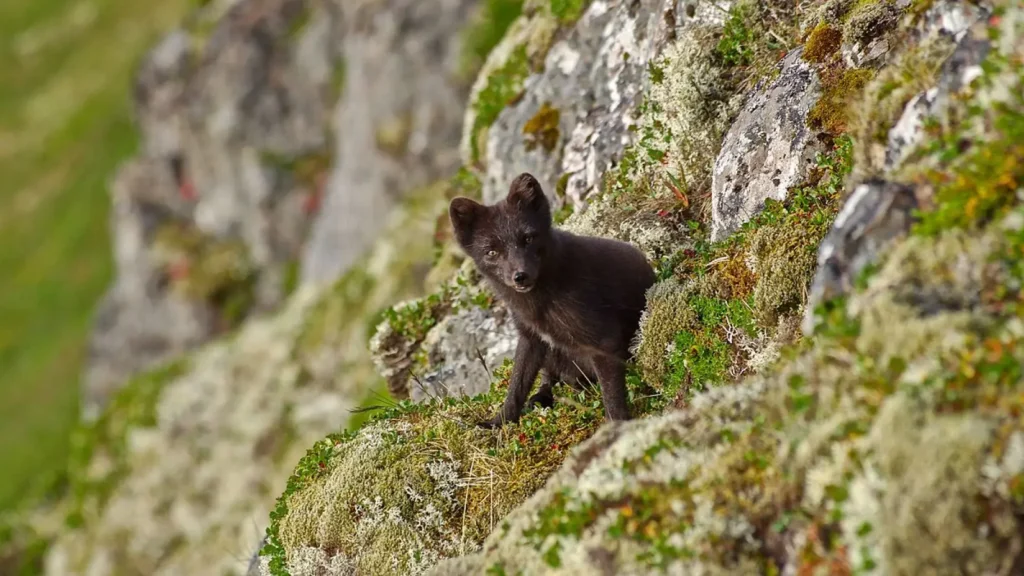Arctic Fox (Vulpes lagopus), also known as the Arctic fox, is a small but extremely hardy predator that lives in the harsh conditions of the northern tundra and glaciers. Its thick fur, ability to change color depending on the season, and advanced adaptive mechanisms make it one of the hardiest mammals on the planet.
This clever hunter not only adapted to the extreme cold, but also developed unique survival strategies, including the ability to find food under a thick layer of snow, hide in snow holes, and even follow polar bears to eat the remains of their prey.

Classification and scientific name
• The Kingdom: Animals (Animalia)
• Type: Chordal (Chordata)
• Class: Mammals (Mammalia)
• Row: Predatory animals (Carnivora)
• Family: Canines (Canidae)
• Gender: Foxes (Vulpes)
• View: Arctic Fox (Vulpes lagopus)
The Arctic Fox is the closest relative of the common fox (Vulpes vulpes), although it is much better adapted to the Arctic climate.
Appearance and physical characteristics
The Arctic Fox has a compact body, short paws, small ears, and thick fur, which helps it keep warm even in the most severe frosts.
✔ Sizes:
- Body length: 46-68 cm
- Tail length: 25-40 cm
- Weight: 3-9 kg (males are slightly larger than females)
✔ Features of appearance:
🔹 Winter color: thick white coat that allows you to blend in with the landscape and provides excellent thermal insulation.
🔹 Summer coloring: brown, grayish, or bluish-gray fur that camouflages the animal among rocks and tundra vegetation.
🔹 Compact ears and paws: reduce heat loss and help them survive at low temperatures.
🔹 Claws and paw soles: are covered with thick fur, which allows them to move on ice and snow without freezing.

Habitat and habitat
🌍 Arctic foxes live in the northernmost regions of the planet:
✔ Arctic (Greenland, Canada, Alaska, Russia, Scandinavia)
✔ Tundra and polar islands
✔ Glacial coasts
Its habitat is cold deserts and tundra, where temperatures can drop to -50°C in winter.

Lifestyle and behavior
The arctic fox is a territorial and social animal with a semi-sedentary lifestyle.
🔹 Monogamy: Arctic foxes form pairs for life.
🔹 Snow holes: build underground shelters to protect them from predators and frost.
🔹 Movement: can travel up to 3-5 thousand kilometers in search of food.
🔹 Sound communication: use growling, yelping, and barking to communicate.
Nutrition and hunting strategy
🍽 The arctic fox is an omnivorous predator that feeds on food:
✔ Lemmings and small rodents
✔ Birds and their eggs
✔ Polar bears' food remains
✔ Carrion, fish, marine invertebrates
✅ Hunting tactics:
- It uses its hearing to find rodents under the snow.
- He tracks and catches birds in their nests.
- In winter, he often follows polar bears, picking up the remains of their prey.

Reproduction and life cycle
🔹 Mating season: March-April
🔹 Pregnancy: 49-57 days
🔹 Number of cubs: 5-12 (sometimes up to 25, which is a record among carnivorous mammals)
🔹 Care for offspring: parents raise their babies together in burrows until they become independent.
🔹 Puberty: 9-10 months
🔹 Life span: 3-6 years in the wild, up to 14 years in captivity.
Natural enemies of the arctic fox
🦅 Birds of prey (eagles, owls) - hunt young fox cubs.
🐺 Wolves and wolverines - can attack adult arctic foxes.
🐻 Polar bears - Sometimes they kill arctic foxes if they get close to their food.
Importance for the ecosystem
✔ Rodent population control - Arctic foxes reduce the number of lemmings and other small mammals, maintaining the ecological balance.
✔ Recycling of organic residues - Dispose of carrion, seal remains and fish, preventing the spread of disease.
Threats and security
🔴 Main threats:
✔ Climate change (melting of the Arctic ice)
✔ Hunting for fur (in some countries)
✔ Decreasing lemming populations due to global warming
✅ Security status:
- The arctic fox is not considered an endangered species, but its numbers depend on climate change.
- It is included in the protection lists in some regions, such as Scandinavia.
Interesting facts about arctic foxes
✔ It can travel up to 5000 km in search of food.
✔ Its fur is one of the warmest among all mammals.
✔ It has a unique ability to change the color of its fur depending on the season.
✔ It can hunt using the "fox jump" method, diving headlong into the snow.
✔ Thanks to its cold adaptation, it can survive in temperatures down to -50°C.
Conclusion
The Arctic fox is a true master of survival in the harsh Arctic environment. Its endurance, cunning and adaptability make it a unique inhabitant of the northern latitudes. Thanks to its characteristics, it remains one of the most interesting representatives of carnivorous mammals in the world.